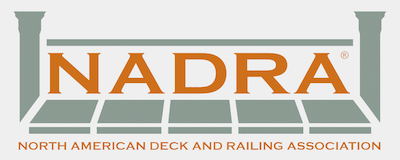As temperatures drop and snow begins to fall, wildlife is on the lookout for food and shelter. While trees and brush protect pests like squirrels, rats, and raccoons for most of the year, these animals frequently seek out warmer locations for the winter. As a result, the chances you’ll discover them holing up in the garage, attic, or shed increase dramatically during cold weather.
Poorly maintained areas of the home are the most common access points for pests. Everything from cracks in foundations to loose shingles and holes in the roof can provide an avenue for animals to move inside. If you’re considering a remodel to prevent wildlife infestations, focus on these five parts of the house:
1. Soffits/Fascia
Because squirrels are excellent climbers, they often scale trees to get to the roof. From here, they can reach soffits and fascia, two important but easily damaged parts of a home. Soffits, the areas underneath overhangs, typically contain venting for the roof and attic. Gutters are frequently mounted onto fascia, the exposed siding on the front of an overhang.
Once they enter through holes in soffits or fascia, pests can quickly spread to other places, like wall voids and attics. Animals moving around indoors create scratching and scurrying noises that unsettle homeowners. During a remodeling job, be sure to repair or replace any damaged soffits and fascia to prevent pest issues.
2. Chimneys
Providing warmth and protection, chimneys are a popular nesting site for wildlife in the winter. Animals like raccoons and bats often gain access from the roof, where uncapped chimneys welcome them indoors.
Since some pests carry diseases that can infect humans and pets, animals that fall or climb down chimneys into homes present a safety concern. A raccoon or bat may also become trapped and die in a chimney, requiring professional removal to avoid insect and odor problems. When doing roof or chimney work, remember to install a functioning cap to deter wildlife.
3. Vents
Vents on your roof and the sides of your house are great for circulating air and managing moisture. Unfortunately, improperly installed fixtures may let in animals. Bats, rats, birds, and even raccoons can get in via these openings.
Droppings that build up in ducts can create foul smells and health risks. Bird nests in dryer vents may present a fire hazard as well. Screening your vents keeps them functional and off-limits to pests.
4. Weather Stripping
In the winter, weather stripping around windows and doors stops cold air from leaking into your home. However, rats and mice can gnaw through old rubber, vinyl, and foam strips to squeeze inside. Inspecting and replacing worn weather stripping is essential to keep you warm and repel nuisance wildlife.
5. Pipes
Any area with pipes that lead to exterior walls may become an entrance for pests. Poor caulking around pipes provides holes small animals can easily chew through to access wall voids and attics. If you’re doing a remodeling project, pay close attention to where pipes exit the house and carefully fill any gaps.
Removing Nuisance Animals
Most of these top five home entry points require you to screen or cap openings. However, it’s important not to seal pests indoors when remodeling. Trapped animals may try to exit through living spaces, putting residents in a dangerous situation. Only cover cracks or gaps when you are sure there are no pests inside.
For the best results, consult wildlife professionals like the experts at Critter Control. Trained technicians will work to remove all animals and prevent them from returning.




















